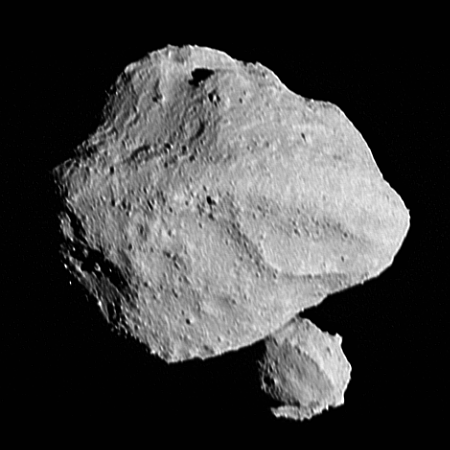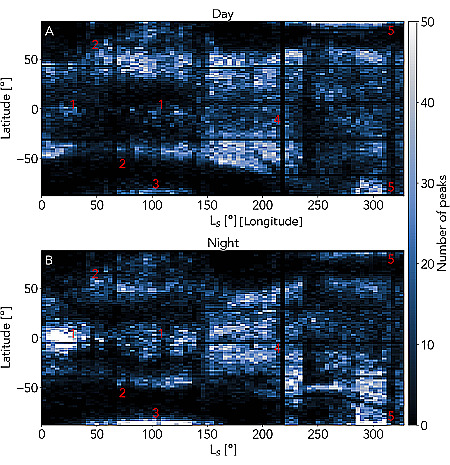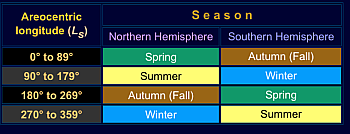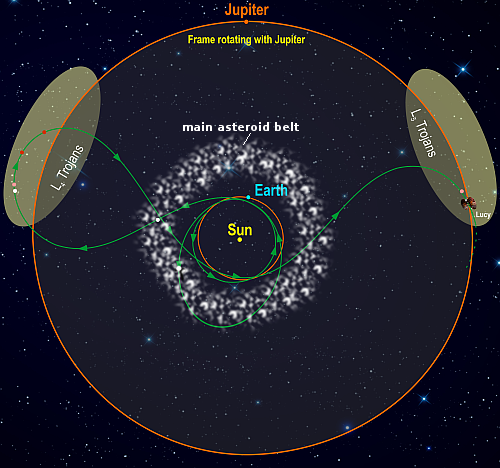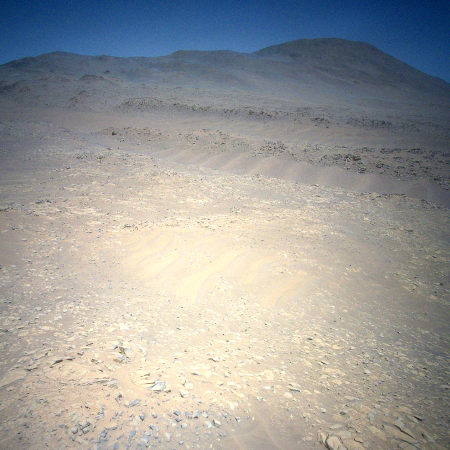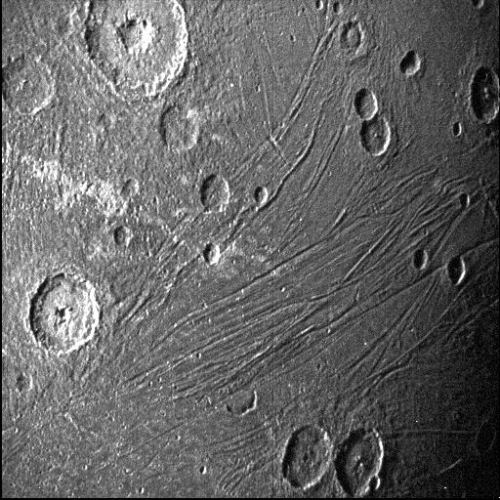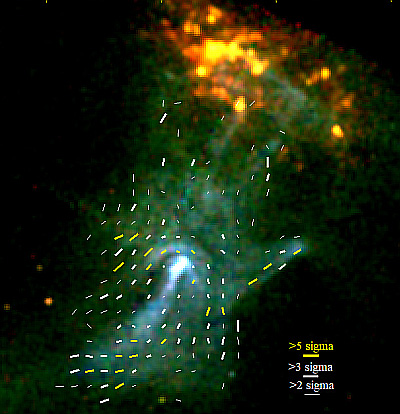Lucy discovers second small asteroid orbiting Dinkinesh
During its November 1, 2023 fly-by of the asteroid Dinkinesh the asteroid probe Lucy surprisingly discovered that the asteroid was actually a binary, with a second smaller asteroid orbiting it.
The picture to the right, cropped, reduced, and sharpened to post here, was taken by Lucy’s camera within a minute of the probe’s closest approach of 270 miles. The second asteroid is partly blocked by Dinkinesh.
In the weeks prior to the spacecraft’s encounter with Dinkinesh, the Lucy team had wondered if Dinkinesh might be a binary system, given how Lucy’s instruments were seeing the asteroid’s brightness changing with time. The first images from the encounter removed all doubt. Dinkinesh is a close binary. From a preliminary analysis of the first available images, the team estimates that the larger body is approximately 0.5 miles (790 m) at its widest, while the smaller is about 0.15 miles (220 m) in size.
The nature of both asteroids appears to lie between a rubble pile (like Bennu) or a solid smooth rock (like Eros), suggesting we are now beginning to see aspects of the overall evolution of asteroids over time.
So far only a few images from this fly-by have been released. It will take a week for the rest of the data from the fly-by to beamed back to Earth. However, these images prove that the prime purpose of this fly-by was successful, proving that Lucy is operating as planned, able to point, manuever, and obtain its data during such a fly-by. When it arrives in the Trojan asteroids in 2027 it will be able to do its prime mission.
During its November 1, 2023 fly-by of the asteroid Dinkinesh the asteroid probe Lucy surprisingly discovered that the asteroid was actually a binary, with a second smaller asteroid orbiting it.
The picture to the right, cropped, reduced, and sharpened to post here, was taken by Lucy’s camera within a minute of the probe’s closest approach of 270 miles. The second asteroid is partly blocked by Dinkinesh.
In the weeks prior to the spacecraft’s encounter with Dinkinesh, the Lucy team had wondered if Dinkinesh might be a binary system, given how Lucy’s instruments were seeing the asteroid’s brightness changing with time. The first images from the encounter removed all doubt. Dinkinesh is a close binary. From a preliminary analysis of the first available images, the team estimates that the larger body is approximately 0.5 miles (790 m) at its widest, while the smaller is about 0.15 miles (220 m) in size.
The nature of both asteroids appears to lie between a rubble pile (like Bennu) or a solid smooth rock (like Eros), suggesting we are now beginning to see aspects of the overall evolution of asteroids over time.
So far only a few images from this fly-by have been released. It will take a week for the rest of the data from the fly-by to beamed back to Earth. However, these images prove that the prime purpose of this fly-by was successful, proving that Lucy is operating as planned, able to point, manuever, and obtain its data during such a fly-by. When it arrives in the Trojan asteroids in 2027 it will be able to do its prime mission.

